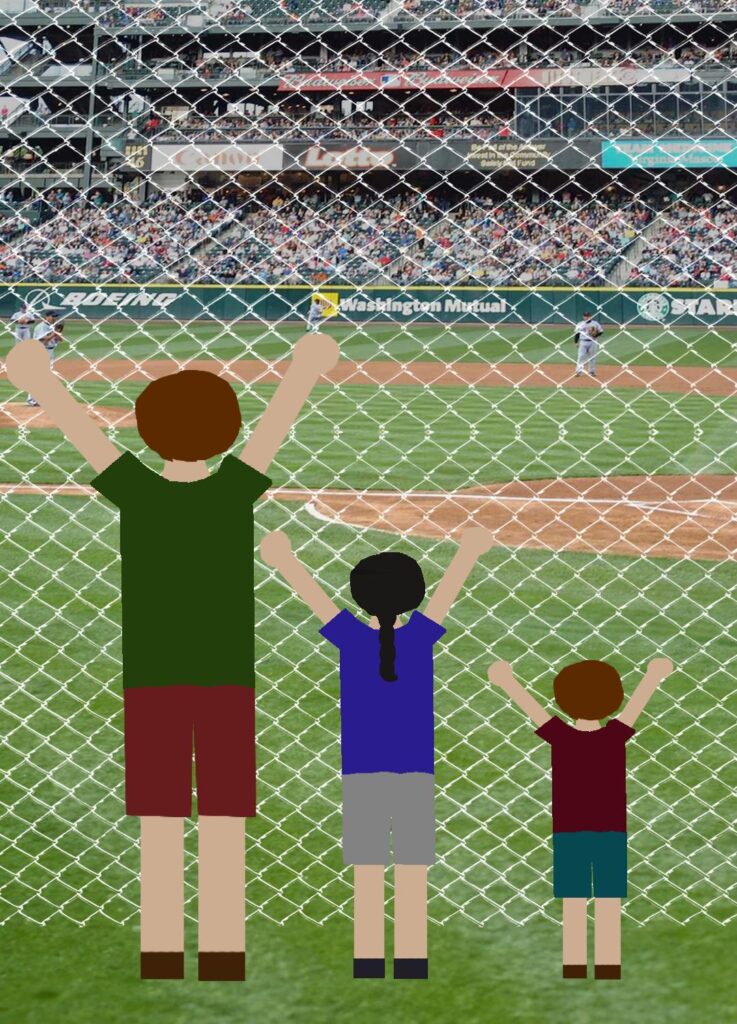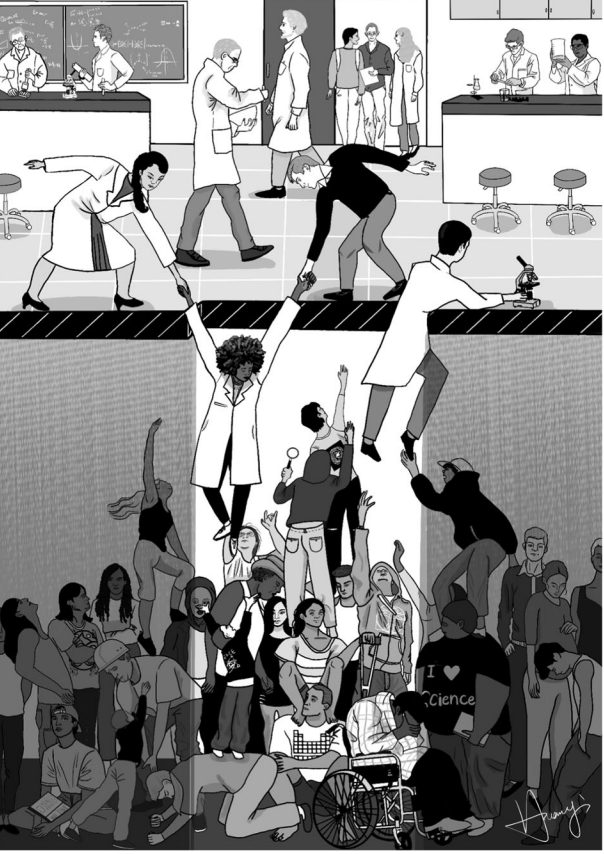Confronting Biases in Science Teaching
Systems of science education can marginalize, and indeed oppress, students in multiple ways. It is important that teachers examine how the practices, norms, and social context within which science education is designed and enacted can reinforce modes of discrimination that differentially impact the student population.
Below are three approaches that teachers can use to move past mere academic understandings of equity and diversity in science education to examine their own personal dispositions with a view to developing more equitable spaces of science education.
Approach #1 – Fostering Engagement by Using Diversity as an Objective of the Course
By repeatedly using a narrow set of pedagogical tools that are comfortable and familiar to themselves, teachers reinforce (often unwittingly) a limited understanding of what it means to learn and practice science. To mitigate this outcome, the teacher might consider framing the overall course objective as fostering engagement in a diverse range of ways, for a diverse range of learners. When this is stated as the guiding objective for the course, the teacher can frequently return to this objective to gauge how well the course is progressing. This objective would frame the pedagogies and assignments teachers employ in order to respond to and support student diversity.
Draw attention to the Ministry of Education’s emphasis on English Language Learners and students identifying as Indigenous in Canada.
When designing the course assignments, be attentive to diversity in the lesson plan, instructional activities, assessment and evaluation.
Personally deconstruct who you imagine students to be and try to confront deficit ideologies that attend the subject matter and impact us all as members of society.
Shift the onus away from what students have to do or become in order to be successful in science and focus on how science teachers can establish effective learning environments while confronting inequities that are pervasive in systems of education.
- Draw attention to the Ministry of Education’s emphasis on English Language Learners and students identifying as Indigenous in Canada.
- When designing the course assignments, be attentive to diversity in the lesson plan, instructional activities, assessment and evaluation.
- Personally deconstruct who you imagine students to be and try to confrontation deficit ideologies that attend the subject matter and impact us all as members of society.
- Shift the onus away from what students have to do or become in order to be successful in science and focus on how science teachers establish effective learning environments while confronting inequities that are pervasive in systems of education.
Understanding equity



This set of images helps to illustrate increasingly more critical ways of understanding equity. To arrive at the position depicted in the last picture, people with power in the system (i.e., educational leaders, teachers, administrators, etc.) had to examine why certain structures look the way they do. Once the principle reason for the structural feature is understood (and accepted), alternative ways of achieving the same outcomes can be developed and adopted.



This set of images helps to illustrate increasingly more critical ways of understanding equity. To arrive at the solution depicted in the last picture, people with power in the system (i.e., educational leaders, teachers, administrators, etc.) had to examine why certain structures look the way they do. Once the principle reason for the structural feature is understood, alternative ways of achieving the same outcomes can be adopted.
Approach #2 – Using Data to Challenge Assumptions About Students
Discussions with colleagues about the prevalence of bias can be initiated by using quantitative data from studies that challenge stereotypes about children, such as those living in low-income circumstances.
Example: Who's perspective?

The data below illustrate how quantitative data that can be used to challenge assumptions about students. The data are part of a study that investigated how informal science educators and children aged 9 to 14 in a given low-income community in western Canada described the attitudes, dispositions, and experiences that influence the informal science education practices of children in the community. The data set contrasts the perspectives on science presented by children with what informal science educators who work in that neighborhood think children will say about science.
Try this yourself: Look at the statements and responses below. Which graph represents the children’s responses and which one represents what the science educators thought children would say?

Children: Almost half of the children we interviewed showed an interest in a future career in science; this was almost equal to the number of children who were not sure or not interested in a career in science.
Science Educators: The majority of informal science educators thought that children in the community would not be interested in science careers due to limited exposure to science careers. Community workers noted the area has more labor-oriented jobs, making science careers unfamiliar to children.
Children: Almost half of the children we interviewed showed an interest in a future career in science; this was almost equal to the number of children who were not sure or not interested in a career in science.
Science Educators: The majority of informal science educators thought that children in the community would not be interested in science careers due to limited exposure to science careers. Community workers noted that the area has a high density of labor-oriented jobs, which might make science careers unfamiliar to children.

Science Educators: The adults heavily underestimated the extent to which children were thinking about and engaging in science-related activities at home; in fact, none of the adults thought that children would say that they think about science things they want to do at home. The educators’ responses indicated a strong belief that science education is an imposition to children living in low-income settings, rather than something of interest.
Children: Nearly half of the children agreed with the statement about thinking of science things they want to do at home. Children were able to identify a number of ways in which they learn about science and do science in out-of-school settings, including home. Children pursued their science education interests at home by building things, completing science homework, experimenting in the kitchen with cooking ingredients and equipment, replicating experiments done at school, trying experiments shown in online videos, using science kits purchased by family members, playing science-related computer games and simulations, watching TV shows with science themes, teaching science to or learning from siblings or other relatives, or reading about science-related topics.
Example: Which community?

Another example of this data-driven approach is illustrated below. Those data are part of a study that explored how students (aged 14 to 18) from two very different social contexts characterized science.
Can you predict whether the answers below represent:
- The views of a group of adolescents from a fee-paying university preparatory school, enrolled in non-compulsory science courses at senior high school level;
- The views of adolescents attending different publicly funded schools, all enrolled in the same community-based after-school program, located in a low-income neighborhood.
Science is unbiased
Scientific rules come from direct observations
Good science relates on experiments
School science is a snap-shot of real science
Though these data represent the answers given by the group of adolescents from the community club located in a low-income neighborhood, their responses were almost identical* (in terms of percentages) to the ones given by the group of students attending a fee-paying university preparatory school, enrolled in non-compulsory science courses. Therefore, two groups of students who came from very different social contexts held the same views on the nature of science.
* statistically non-significant

Approach #3 – Critically Examining the Science Field
An approach that has proven very impactful for those preparing to teach science is the use of a drawing that I commissioned to illustrate Crenshaw’s (1989) account of intersectionality in a science education context. Using national data about participation in science careers, the picture below can be analyzed on multiple levels.
The invitation
To introduce the image, I describe an open invitation being made for people to study and work at the House of Science. In the publicity information, the only stated criterion for entrance is an interest in science. Entry occurs individually, but, unbeknownst to the applicants, different parties are directed either to the basement or the main floor. Aligning with Crenshaw’s conceptualization, people on the main floor are largely insensitive to the people in the basement, and the basement is too deep for people to access the main floor without standing on the shoulders of, or gaining some other form of aid from, others in the basement.
Self-reflection
Find yourself (or someone like you) and your own story in the picture. Next, pick someone who is unlike you and describe their activity in the House of Science. Possible questions to ask yourself are:
- How did the person get there?
- What are they doing?
- What is their likely future in relation to the house?
- What social/structural/institutional phenomenon is the artist depicting for each individual?
It is important to examine how you know what you assert and what assumptions or evidence this knowledge is based on.
As your reflection develops, Note indicators of race, ethnicity, gender, education level, ability, conformity to norms and expectations, attentiveness to others, etc. Finally, focus on the gatekeeper (the person who directed people to the main floor); what people, processes, systems or structures might this ‘gatekeeper’ represent, and how do they work to limit the diversity of people participating in science? What can a teacher do about this situation in their own classroom?

Welcome to the House of Science: Intersectionality in science education and practice
Publication
For further insights into diversity in science education, read the article “Foregrounding Intersectionality in Considerations of Diversity: Confronting Discrimination in Science Teacher Education” published in the journal Research in Science Education.

